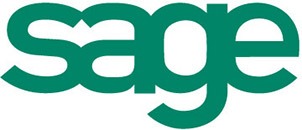Tax measures taking effect in April mean businesses face rising wage costs in 2025. As a result, many businesses are considering whether price increases could help them manage the financial impact without losing customers.
High Street retailer Next recently announced a price increase of 1% on some clothing items to help offset an anticipated £73 million rise in staff wages and taxes. Their strategy and decisions provide some useful insights.
Why wage costs will increase
Wages are rising due to changes announced in the 2024 Autumn Budget, effective from April 2025, including:
- An increase in employers’ National Insurance contributions from 13.8% to 15%.
- A rise in the National Living Wage from £11.44 to £12.21 per hour.
Next’s 1% price increase, despite being below the rate of inflation, reflects a broader trend among businesses. The British Chambers of Commerce business group recently reported that over half of companies plan to raise prices in the coming months to cope with higher costs.
A pricing strategy based on a shift in behaviour
For businesses like Next, keeping the price increase modest allows them to avoid alienating price-sensitive customers. Their decision to target specific product lines – rather than applying a blanket rise – may help to retain customer loyalty while addressing immediate financial pressures.
Next acknowledged that the price increase is “unwelcome”; however, they believe their analysis supports the strategy. They have observed a trend in shoppers opting for mid-to-higher-priced items instead of purchasing cheaper alternatives. While customers are not necessarily spending more overall, they are buying fewer, slightly more expensive items. This trend is one that Next expects to persist in the short term.
This shift in behaviour has influenced Next’s pricing strategy. By focusing on product lines where customers may be less sensitive to price increases, they aim to maintain value for their customers while safeguarding their margins.
Lessons for businesses
Next’s approach provides valuable lessons for businesses developing pricing strategies to manage rising wage costs:
- Incremental adjustments: Small, targeted price increases can help mitigate cost pressures without overwhelming customers.
- Focus on value perception: Shopper trends suggest that emphasising mid-to-higher-priced items may help sustain profitability.
- Monitor customer behaviour: Next’s strategy is rooted in observations of their customers’ behaviour. Similarly, understanding shifts in your customers’ spending patterns can reveal where price increases are less likely to alienate them.
There is no doubt that rising wage costs will present challenges to businesses over the coming months. However, if Next have calculated correctly, they expect to increase their profits by 3.6%. This demonstrates that a well-planned pricing strategy can help businesses adapt to rising costs while maintaining competitiveness in these challenging times.
If you need assistance analysing how changes to your pricing strategy could benefit your business, why not give us a call? We’d be delighted to help!









